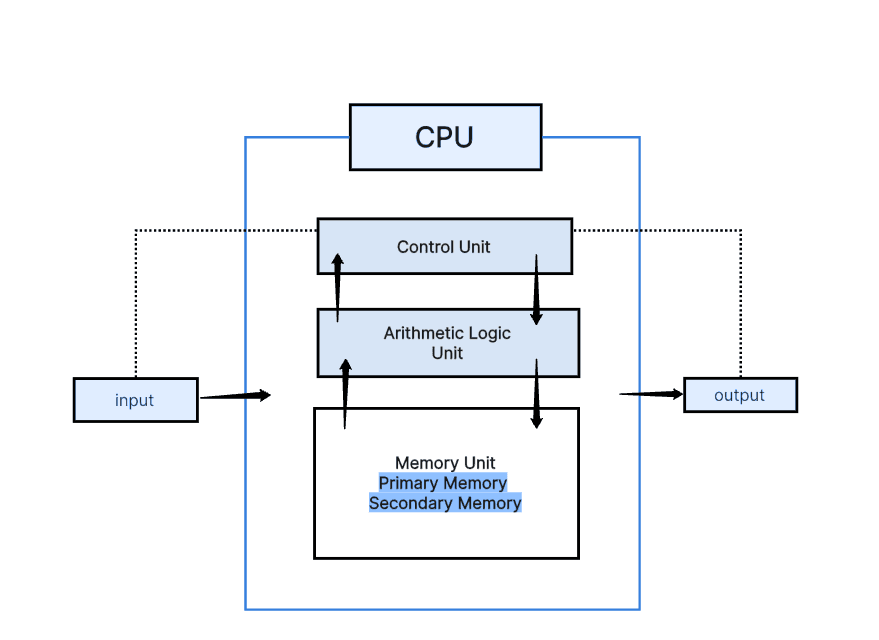A computer system is an electronic device that processes data and performs tasks based on instructions. It works by taking input from the user, processing the data, and producing output. A computer system is widely used in daily life for various purposes like storing data, performing calculations, running programs, and communication.
The computer system is made up of two main components:
- Hardware: These are the physical parts of the computer, like the CPU, memory, and input/output devices.
- Software: These are the programs and instructions that tell the computer what to do.
Together, hardware and software make the computer system efficient and reliable for different tasks.
Block Diagram of a Computer System

The block diagram shows the main components of a computer and how they work together. The components are:
- Input Unit
- Central Processing Unit (CPU), which has:
- Control Unit (CU)
- Arithmetic and Logic Unit (ALU)
- Memory Unit
- Output Unit
The flow of data is as follows:
Input Unit → CPU (CU, ALU, Memory) → Output Unit
This sequence ensures smooth processing of data and generation of results.
Explanation of Each Block
1. Input Unit
The input unit collects data and instructions from the user. It uses input devices like the keyboard, mouse, scanner, or microphone. For example, typing on a keyboard or clicking the mouse sends information to the computer. These inputs are then passed to the CPU for processing.
2. Central Processing Unit (CPU)
The CPU is called the brain of the computer because it processes all the data and controls the operations. It consists of three parts:
a. Control Unit (CU): This part controls how data flows between different components of the computer. It ensures that tasks are done in the correct order.
b. Arithmetic and Logic Unit (ALU): This part handles all calculations, such as addition, subtraction, multiplication, and division. It also performs logical operations, like comparing two values.
c. Memory Unit: The memory unit stores data and instructions temporarily or permanently. It uses RAM (temporary memory) and ROM (permanent memory). For example, when you type a document, the memory temporarily stores the data before saving it.
3. Output Unit
The output unit displays the processed data or results to the user. It uses output devices like monitors, printers, or speakers. For example, after completing a calculation, the result is shown on the monitor. The output unit makes it easy for users to understand the results.
A computer system works systematically to take input, process it, and provide output. The input unit collects the data, the CPU processes it, and the output unit displays the results. Each component plays an important role in ensuring the computer system works effectively. This structure makes computers useful for various tasks in fields like education, business, and healthcare.

